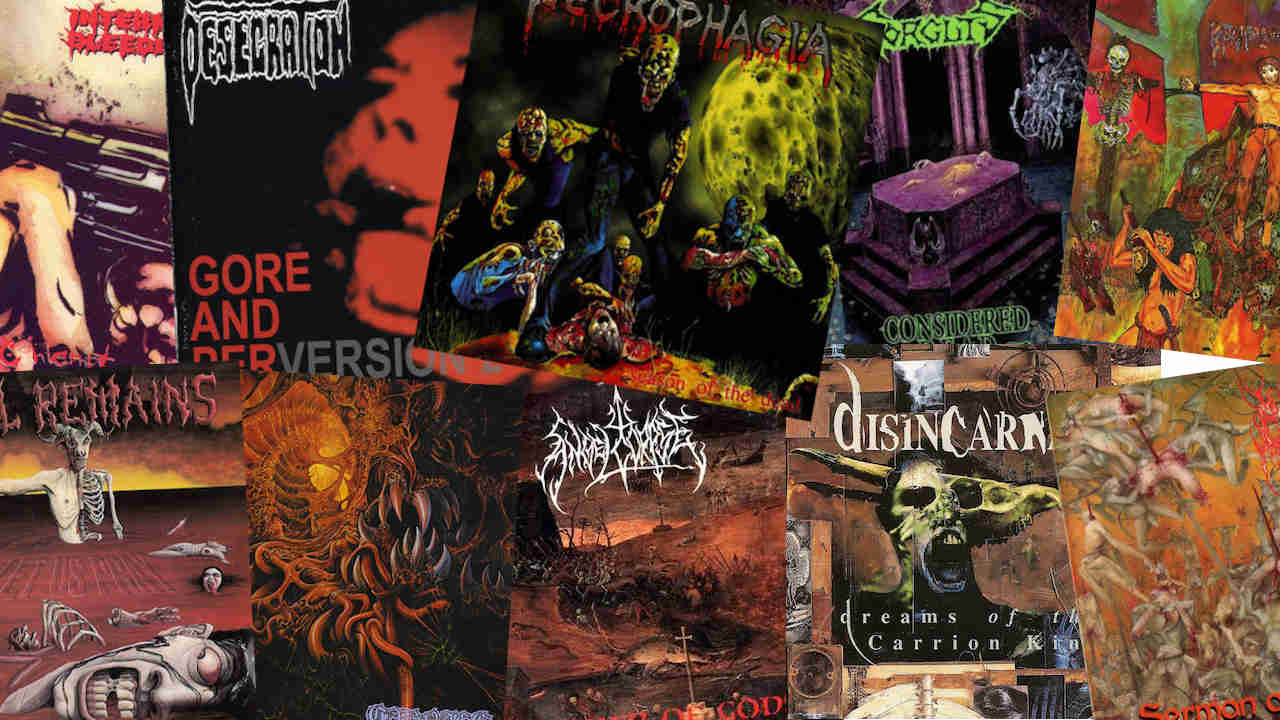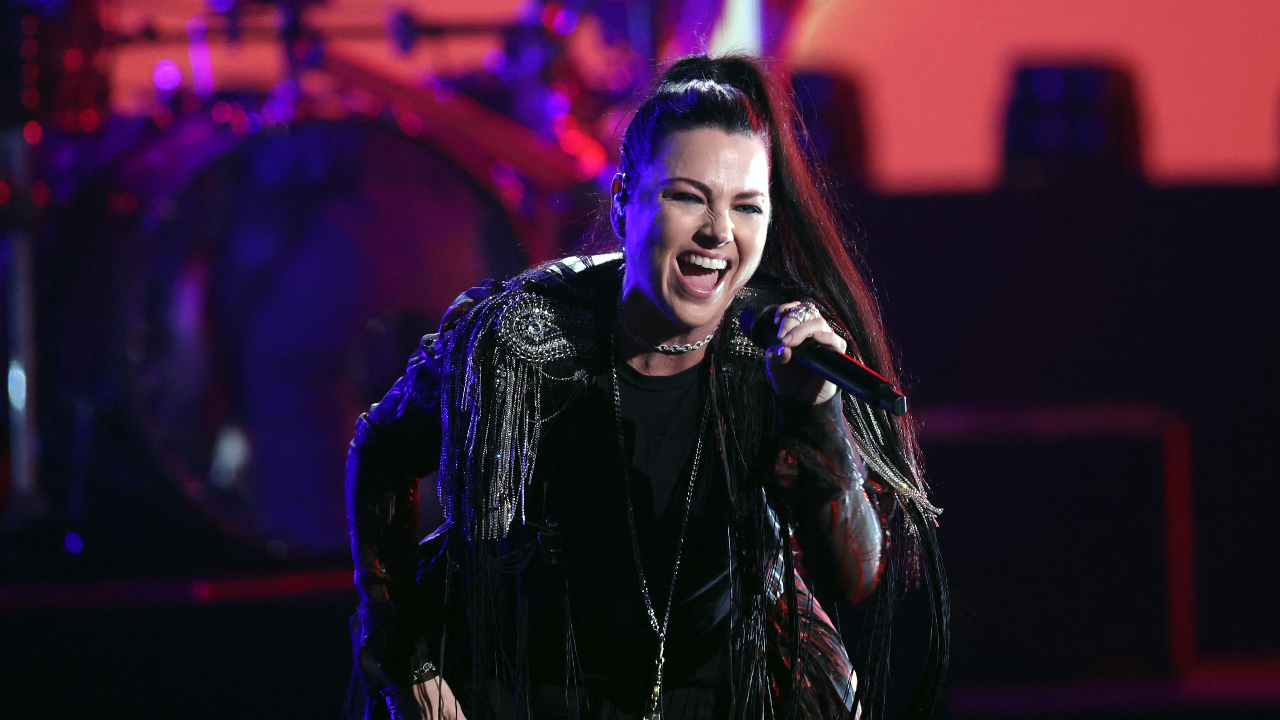10 essential cult death metal albums
Digging deep into the underground, here are 10 extreme classics only true death metalheads know about

Death metal has had such a huge and enduring impact on the evolution of heavy music over the last 30 years that few devoted metalheads will need informing about the contribution of heavyweights like Morbid Angel, Obituary or Death.
But beyond the obvious classic albums and legendary names lies a vast quantity of equally seminal but less celebrated exercises in brutality, and here are ten of the best and most significant from the first (and possibly second) golden age of underground extremity.

Carnage – Dark Recollections
Carnage are rarely acknowledged for their grand contribution to the early ‘90s Swedish death metal scene, but Dark Recollections more than holds its own against the more regularly celebrated likes of Entombed’s Left Hand Path and Dismember’s Like An Ever Flowing Stream.
Originally released as a split effort with Norwegian death squad Cadaver’s equally seminal Hallucinating Anxiety, it boasted the classic Sunlight Studios sound, but thanks to some sharp and inventive songwriting, it was anything but a clone of those aforementioned big hitter’s efforts. It also introduced guitarist Michael Amott to the wider metal world and subsequently led to his recruitment by UK legends Carcass.
Necrophagia – Season Of The Dead
Possessed’s Seven Churches may be death metal’s generally acknowledged starting point and Death’s Scream Bloody Gore debut may be the first pure DM album – at least in terms of how we expect the genre to sound – but Necrophagia’s horror-drenched debut came out several months earlier than Chuck Schuldiner’s first foray and remains a criminally overlooked work of influential extremity.
Raw, chaotic and primitive, it was as inspired by the celluloid works of Argento and Fulci as it was by Slayer or Celtic Frost and, as a result, made a massive contribution to death metal’s eventual vocabulary and aesthetic.
Angelcorpse – Hammer Of Gods
Death metal went through a brief but significant period of struggle during the ‘90s, primarily caused by the rise of black metal and its more easily marketable imagery and ethos. But when it comes to extremity and the virulent stench of evil intent, few black metal bands came close to the vicious, flailing fury of Angelcorpse’s debut album.
Sign up below to get the latest from Metal Hammer, plus exclusive special offers, direct to your inbox!
Hammer Of Gods offered the perfect combination of Morbid Angel-style chaos and flat-out metallic rage, as raw, unrelenting songs like Consecration and Soulflayer injected several jolting doses of malevolence into the US crew’s deathly and deadly attack.
Internal Bleeding – Voracious Contempt
Seldom recognised for their vast contribution to the way death metal evolved during the late 90s, Internal Bleeding are strong contenders for the (quite possibly) coveted title of Godfathers Of Slam.
Voracious Contempt was a straightforward brutal death metal album in many ways, but the Long Island five-piece had a penchant for hulking, lobotomised grooves and breakdowns; a mutant variant on Suffocation’s original hardcore-tinged blueprint and one that has resonated down the decades, having a particularly major impact on the birth and growth of deathcore.
Desecration – Gore And Perversion
In terms of global impact, Welsh death metal has never really been a big deal, but Desecration’s utterly vile (and, therefore, brilliant) debut briefly threatened to turn its creators into death metal’s most notorious band.
With songs like No More Room In The Freezer, Penile Dissection and Coprophiliac Connoisseur, Gore And Perversion was clearly the work of some truly warped minds, but Desecration had the technical chops and intensity to avoid being mere Cannibal Corpse clones or cynical shock merchants.
Mind you, copies of the album were seized and incinerated by police in the band’s native Gwent because of the extreme nature of its contents, which only really served to strengthen the band’s reputation as the real deathly thing.
Gorguts – Considered Dead
These days Gorguts are routinely acknowledged as one of the most inventive and experimental bands in death metal, with albums like 1998’s mind-bending Obscura and the more recent Colored Sands showcasing guitarist Luc Lemay’s extraordinary, freewheeling compositional spirit.
What is less frequently stated is that the Canadians’ 1991 debut is simply one of the best flat-out death metal albums released during the genre’s golden era. Produced by the legendary Scott Burns, it may have conformed to the standard sonic template of the day, but songs like Disincarnated and Rottenatomy were every bit the equal of anything unleashed by death metal’s big names.
Disincarnate – Dreams Of The Carrion Kind
Perhaps better known for being a member of Death, Testament and Obituary at various points in his career, guitarist James Murphy is death metal’s great unsung genius.
The one and only Disincarnate album is simply a masterpiece of early ‘90s death metal, with a progressive streak a mile wide and levels of technicality and intricacy that few of Murphy’s peers could compete with at the time.
Much revered by dedicated students of this stuff, Dreams Of A Carrion Kind still sounds incredible today. Listen to Monarch Of The Sleeping Marches and try not to bang your head. Seriously, give it a go.
Impetigo – Ultimo Mondo Cannibale
Hugely influential on the later goregrind scene, Impetigo were disgusting human beings on a mission to terrify and torture. Satan bless their cotton socks. Ultimo Mondo Cannibale was pioneering in its use of horror movie samples and subversive in its underlying black humour, while the overall sloppiness and lyrical perversity of songs like Maggots and Bloody Pit Of Horror made the Illinois quartet obvious comrades of the more celebrated Autopsy. Revolting fun, basically.
Pyrexia – Sermon Of Mockery
As European death metal’s bigger names started to add polish and hooks to their arsenals, the US scene continued to churn out bands that seemed to have a direct line to Satan’s reception desk.
Pyrexia remain a benchmark for flagrant brutality and Sermon Of Mockery, despite its slightly odd production, stands out as one of the most wilfully unpleasant albums released during the ‘90s.
If nothing else, it noisily foretold the more groove-driven, so-called ‘slam’ style of death metal that would be later propagated by the likes of Dying Fetus and Devourment. None more guttural, none more grim.
Vital Remains – Let Us Pray
These Rhode Island racketeers have been one of underground metal’s most admired bands for the best part of 30 years, and Let Us Pray explains why. While many other bands were simplifying their musical approach, Vital Remains preferred to indulge in elaborate and epic song structures.
Like a fervently progressive take on Deicide’s Satanic bombast, songs like War In Paradise and Cult Of The Dead bridged the gap between death metal’s gutter-level grit and the atmospheric horror of the then burgeoning black metal scene. Nearly an hour in length, it was an audacious opening statement and still sounds gloriously hellish and otherworldly 24 years later.

Dom Lawson has been writing for Metal Hammer and Prog for over 14 years and is extremely fond of heavy metal, progressive rock, coffee and snooker. He also contributes to The Guardian, Classic Rock, Bravewords and Blabbermouth and has previously written for Kerrang! magazine in the mid-2000s.
